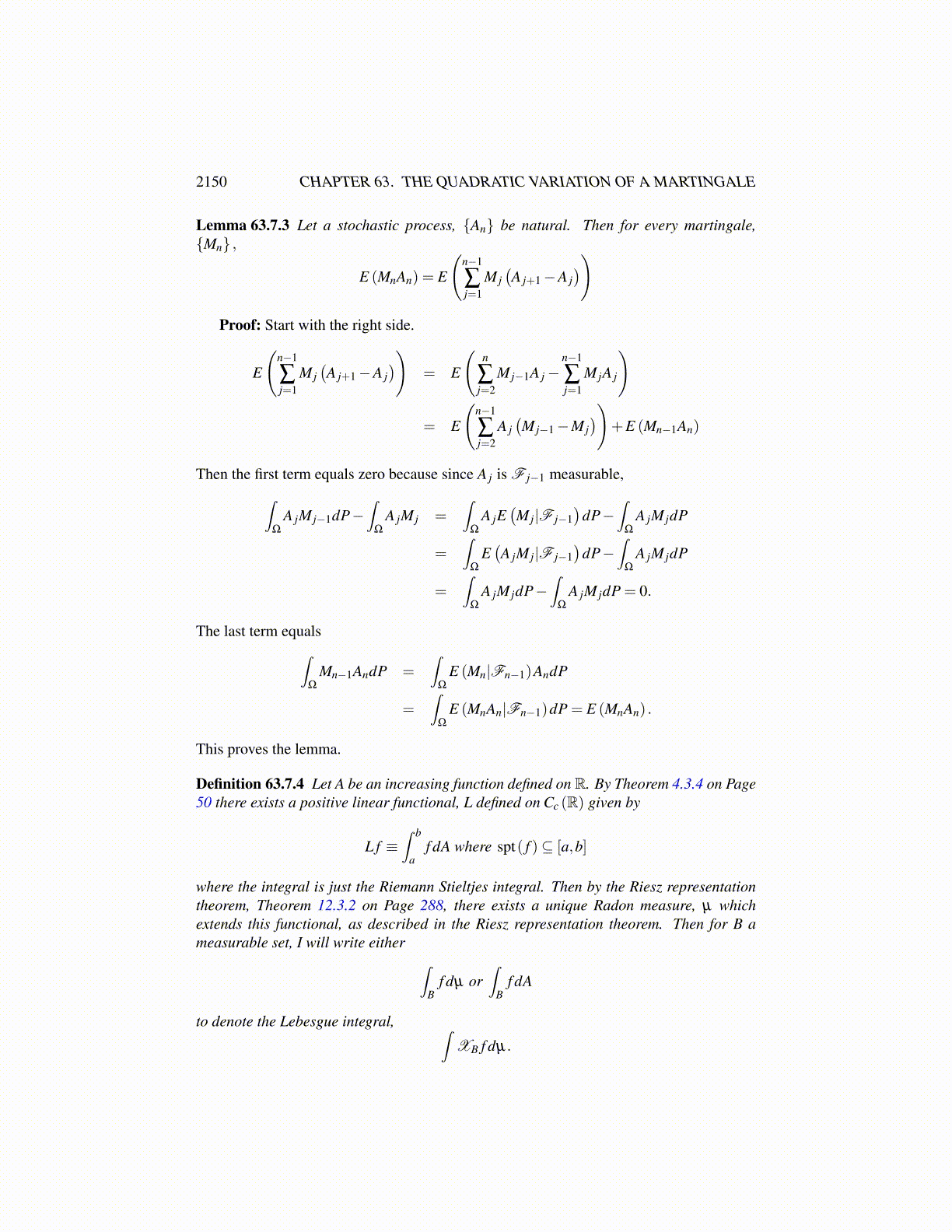
2150 CHAPTER 63. THE QUADRATIC VARIATION OF A MARTINGALE
To save notation, let
Qn (t)≡mn−1
∑k=0
∣∣M (t ∧ tnk+1)−M (t ∧ tn
k )∣∣2H
Let η ,ε > 0 be given. Then there exists k large enough that P([τk = ∞])> 1−η/2. Thisis because the sets [τk = ∞] increase to Ω other than a set of measure zero. Then,[∣∣Qτk
n − [M]τk (t)∣∣> ε
]∩ [τk = ∞] = [|Qn− [M] (t)|> ε]∩ [τk = ∞]
Thus
P([|Qn− [M] (t)|> ε]) ≤ P([|Qn− [M] (t)|> ε]∩ [τk = ∞])
+P([τk < ∞])
≤ P([∣∣Qτk
n − [M]τk (t)∣∣> ε
])+η/2
From the first part, the convergence in probability of Qτkn (t) to [M]τk (t) follows from the
convergence in L2 (Ω) and so if n is large enough, the right side of the above inequality isless than η/2+η/2 = η . Since η was arbitrary, this proves convergence in probability.
63.7 Doob Meyer DecompositionThis section is on the Doob Meyer decomposition which is a way of starting with a sub-martingale and writing it as the sum of a martingale and an increasing adapted stochasticprocess of a certain form. This is more general than what was done above with the sub-martingales ||M (t)||2 for M (t) ∈M 2
T (H) where M is a continuous martingale. There aretwo forms for this theorem, one for discrete martingales and one for martingales defined onan interval of the real line which is much harder. According to [74], this material is foundin [78] however, I am following [74] for the continuous version of this theorem.
Theorem 63.7.1 Let {Xn} be a submartingale. Then there exists a unique stochastic pro-cess, {An} and martingale, {Mn} such that
1. An (ω)≤ An+1 (ω) , A1 (ω) = 0,
2. An is Fn−1 adapted for all n≥ 1 where F0 ≡F1.
and also Xn = Mn +An.
Proof: Let A1 ≡ 0 and define
An ≡n
∑k=2
E (Xk−Xk−1|Fk−1) .
It follows An is Fn−1 measurable. Since {Xk} is a submartingale, An is increasing because
An+1−An = E (Xn+1−Xn|Fn)≥ 0 (63.7.27)